“Consciousness Altering Cultures in Harmony”
by mick laBriola 3-7-16
SONG OF WONDER
SYNOPSIS
A Concert with Voices of Sepharad and Nirmala Rajasekar
Saturday March 5th 2016 final season performance
Rochester Civic Theater
This was the final concert in a series of performances occurring the week of March 1st 2016 for the SONG OF WONDER collaboration. This series initiating in 2014 in Minneapolis, MN and surrounding communities.
SONG OF WONDER is a combination of the Jewish Sephardic group Voices of Sepharad-VOS David Jordan Harris-vocals, David Burk-guitar/oud and myself (minus our violinist David Stenshoel). Combined with the Carnatic Ensemble of Nirmala Rajasekar-Veena/Vocals with Thanjavur Murugaboopathi-Mridangam, Sowmya Rachakonda-vocals and Priya Kanajam-vocals. The project has attempted to present music of each cultural genre, plus ambitiously combining the two cultural musics into a pastiche of a curious culminating endeavor or “Curried Couscous Gumbo.”
Since I am the percussionist for VOS (since 1986) I am vibrantly eager to explore the multi-varried cultural influences of the Sephardim; whose culture was reprehensibly dispersed from Spain in 1492 to dozens of countries in Europe, the Levant and as far east as Iraq, Iran, Bukhara and even China.
I have always had a deep passion for East Indian music particularly Classical Hindustani and Carnatic music. Over my decades of studying rhythm I had only briefly studied Tabla with Pandit Veejay Shankar, Gopal Mishra and Rushi Vakil (at the Rhythm Riders Institute in Gujarat, India). In addition with a mere few lessons with the Mridangam player for Alarmel Valli in the late 1980’s. Needless to say I never became a Tabla or Mridangam player of classical Indian music. I think it’s takes a daily regime of 4 hours practice for at least a decade, just to initiate the process of such an enormous journey. And I think I may have ruined my hands for tabla at an early age learning Conga & Bongo drums and rigorously performing like a maniac!
When the collaboration began with Nirmala’s Carnatic ensemble I felt I would be rhythmically challenged at a minimum and mysteriously mystified in general by their beautiful music. The TALA system of rhythm in Carnatic music is vast, consisting of hundreds of variations that when performed as a solo can last an undetermined duration. My rhythmic vocabulary seemed to me like Addition/Subtraction in math, compared to the Mridangam math of Calculus & Logarithm systems. “Good luck mick!”
Each ensemble had pieces of music to present in our concert individually, as well as the blending of the two genres to create a new found meeting ground for experimentation and application of each ensembles music. So I decided to play bass guitar on a blended number, AGALDECHA a Sephardic piece borrowed from the 10th c. poet Abraham ibn Ezrah. That way Nirmala’s mridangam player Boopathi, could be featured including displaying his Konnakol (verbal rhythm syllabicating). I also had an opportunity to help with drones on the bass for other Carnatic pieces. This was great opportunity to play something other than a percussion instrument. As it was I had brought out an arsenal of instruments including dumbeck (egyptian), djembe (american), riqq (egyptian), def (turkish) and cajon (Spanish). I felt in order to present a varying array of color and sound, in contrast to the mridangam, I would need a variety of drums. Even though any one of my instruments can produce a spectacular spectrum of sound and articulation. The question was “Am I capable of executing this on one instrument or not? Duh!”
When our ensemble initially presented our project in 2014, we found a way in which to successfully perform our program, and mutually felt that we accomplished a wonderful production. Each time we re emerged through practice, dialogue and performances; we continually achieved a more advanced outcome; “Feeling like we were indeed getting somewhere.”
We concluded our World Fusion presentation with a Carnatic piece labeled “Naagendra-Cosmic Dance of Shiva” with a concluding all percussion solo and duet. I really was terrified about this, knowing the vast complexity of the mridangam in relationship to my rhythm instruments and my limited knowledge of each instrument. Here I was next to a Master Mridangam player, a very humbling experience for sure. We would conclude each concert with a percussion duet, ending each performance with the usual TeHi (concluding repeated phrases-3x’s). However no matter how many times we rehearsed this TeHi pattern it would vary show to show. I would discuss this with my group and we all agreed we could not easily find the downbeat each time as it was performed by Boopathi. It was becoming a bit stressful for me but each time we ended a show everything seemed to work out fine. Still there was always a possibility of mick not ending on the last note with Boopathi, and I certainly did not want this to happen. Even though it did happen once.
So here we are with the last show of our short week of performing and I’m sure we all wanted a fabulous outcome. I had been talking with Nirmala and she is always so gracious and kind to us gringos. The two of us discussed the healing energy of music and how much the world needs these awesome vibrations emanating out there in our universe; as I had also shared this in a conversation with Sowmya one of the singers the day before. While reviewing the performance with Nirmala she gave me her beautiful smile with her very curious Indian mannerism and said, “You are an old soul who has this knowledge deep inside of you.” And I then felt so illuminated and humbled. Every performance VOS shared with Nirmala found her to be so giving and empowering with us. Nirmala and Boopathi would give so much of themselves to us with sheer kindness and empathy; and the desire to explore, experiment and constantly strive to stretch the boundaries of our limitations. It was all so gently uplifting and powerfully magical.
By the end of the performance some more magic occurred in the percussion solos, followed by the percussionists trading of 8’s, 4’s, 2’s & 1’s; all Culminating into an ecstatic TEHI finale.
After the show I was greeted with an abundance of enthusiasm, gratefulness and pure joy. Audience members approached all musicians in the lobby with jubilation and a sense of astonishment. As I thanked the East Indian players for their outstanding support and energetic force, Nirmala said she thought I went into a trance during my percussion solo and said “It is a gift.” Namaste! Much love!
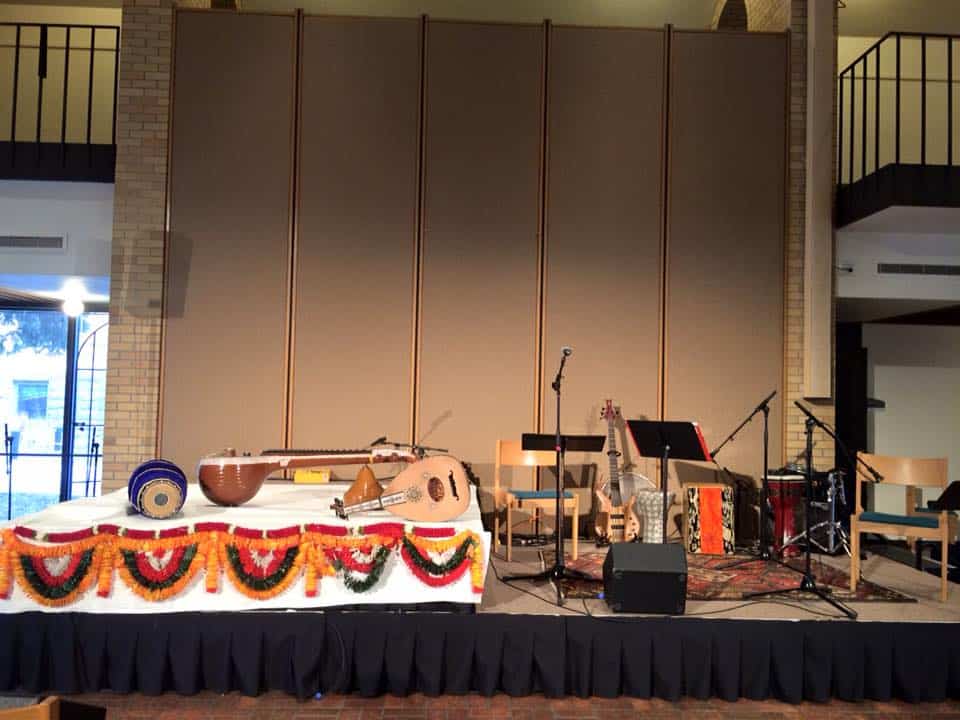
Published on Drummer Cafe Community Forum 2-20-16
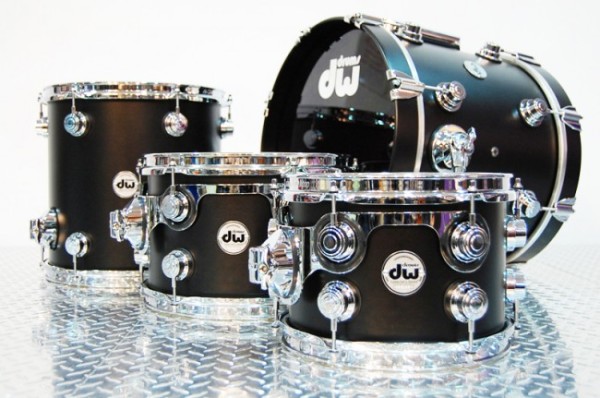 DW vs SONOR DRUMS
DW vs SONOR DRUMS
I own a DW Black piano finish Fast Tom Kit with die cast hoops from the 90’s; 10-12-14-16-20 kick. Hardware is very easy to replace. Durable built like a tank with a loud, punchy, wide open overall sound with a dance band attack, this kit can take a beating and still comes up stellar. Great for Rock n Roll, Reggae, African and Latin music. A working mans kit for sure. I have implemented so many tom heads on the DW’s, and it has been very challenging to say the least. I keep going back to Evans G1 or 2 as a lighter single ply head like a Remo Ambassador, do not accommodate well to the DW’s. I call DW’s, Ayottes and Phatties that I own, the BIG BOOM BOOM KITS.
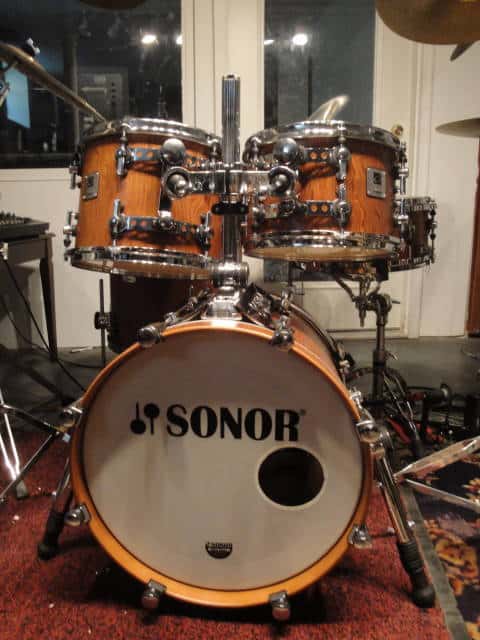
I own two SONOR Designer Bubinga kits one Birch one Light Maple. Birch 12-14-18 kick with 14×6.5 snare and the Maple 12-13-16-18 kick. The Sonors are a quieter Controlled sound kit overall. All very durable and sturdy but with a higher quality custom furniture finish and very precision and heavy hardware but parts are very difficult to replace and or order and don’t let me forget the SONOR non standard drum key (very weird). The sound is certainly wonderful for vintage jazz, R&B, Blues, New Orleans or really any genre of music including theater, dance company music or church/synagogue settings. The SONORs have a brighter tom sound, tuned to pitch similar to the 50’s jazz standard of tuning, they are awesome sounding. I use Remo Ambassadors and frankly they are unusually astounding sounding on these kits. My 1965 Slingerlands have a similar sound but a bit louder with of course the vintage flimsy hardware that was standard back in those days. From about 1969 to 1980’s I had to tie my kick drum to my drum throne because there was no way it would ever stay in place with my wild bronco drumming approach.
So to conclude DW big-loud-great hardware-difficult to tune-reliable-tuning more limited. SONOR quieter sound-beautiful tone-pitch oriented-artistic look-great hardware but difficult to replace-easy to tune-generally more flexible tuning capability! In conclusion I found the kick drums of both brands very easy to tune and accommodate as well as the snare drums.
Does this help?
Good Luck Amigos
micklabriola.com
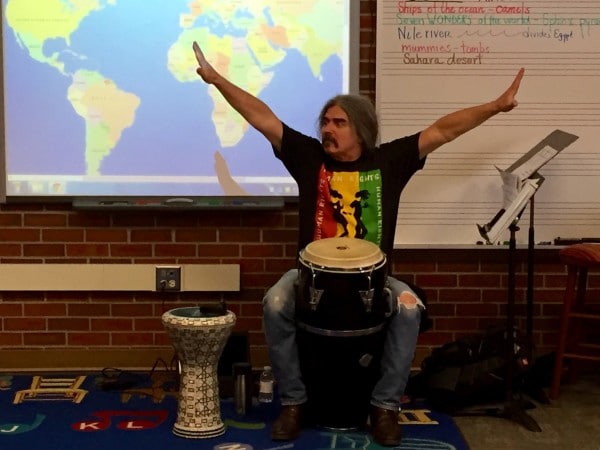 2-1-16 thru 2-12-16
2-1-16 thru 2-12-16
Residency in Action at Clear Springs Elementary in Minnetonka, MN!
Students earning their wings with cultural rhythms!
see full post...All of these services are available for your enjoyment and education!
In addition to educational formats; Performances, Theater & Dance Accompaniment, Recording, Production, Motivational Therapy, Stained Glass Artist, Artist Interviews and Writing. (more…)
see full post...POSITIVE VIBRATIONS is a new Roots Band of veteran Twin Cities Reggae musicians. Covering many former musical projects; including the Maroons, Macumba, Ipso Facto, Shangoya and many more. There is a crucial need for the powerful Roots groove to come back to the Twin Cities. Whether it be Dub, Lovers Rock, Rockers or the vital ONE DROP; audiences can now enjoy, sit back, dance comfortably and ride the magnanimous Bass & Drum riddem!! Dis ere is the essence of the Reggae Vibration.
Band is also available for backing professional Reggae artists from Jamaica and the international arena.
Please contact mick for bookings. (more…)
see full post...Performing every 2d and 4th Wednesday at the Whiskey Junction in Minneapolis
MOJO ROOTS have been performing for the past 14 years; providing a musical alternative to the home grown, agriculturally provocative, party-down atmosphere of the Minnesota State Fair; performing nightly at Cafe Caribe. In fact the group was created by mick laBriola to exclusively work only at the State Fair with a few special-event exceptions. Recently Markiss, MOJO ROOTS guitarist and lead man, has moved back to the Twin Cities. As a result the trio is ready to get-down and shake up the local music scene, with an enticing aura of exuberance and boogie down jams coagulating Blues, R & B, Reggae, Ska, Second Line, Funk, Soul and International Rhythms. In addition MOJO ROOTS can, on demand, provide exclusive genre performances accordingly. In other words we can perform an all Blues or Reggae set or sets for whatever occasion.
Starting in February 2012 we well perform every 2d and 4th Wednesday at Whiskey Junction http://thewhiskeyjunction.com/ in the historic West Bank in south Minneapolis; alternating Wednesdays with the Lost Marbles.
Check us out and I’m sure you will dig our eclectic mix of old school jams.
-
State Fair Musical Impressions/Mojo Roots –Minneapolis Star Tribune 2010
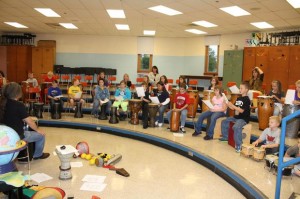 Currently there are Grants available to bring Artists into your school.
Currently there are Grants available to bring Artists into your school.
mick laBriola has been educating and entertaining children in schools, since the creation of his first Assembly Program called the Maroons (music of the English speaking Caribbean) back in 1986. Since then mick has created two additional Assembly Programs, Karibuni (music of the Congo) and Maqam (music of the middle east) to further educate audiences about Culture & Music.
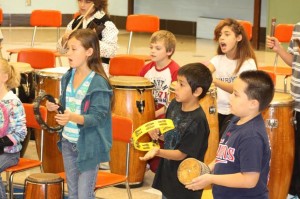
In 1994 mick joined the roster of Artists with the Minnesota State Arts Board, and created a Residency-Workshop program called a Rhythm Roots Workshop working in dozens of schools over the years; and providing all instruments to all students for the duration of the Residency.
Please look into a possible Grants for your school through either of the following organizations:
see full post...- « Previous
- 1
- …
- 878
- 879
- 880
